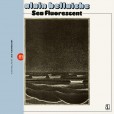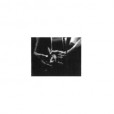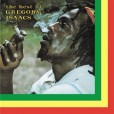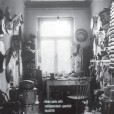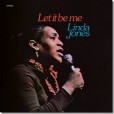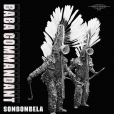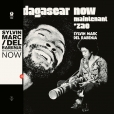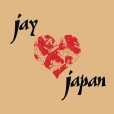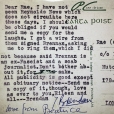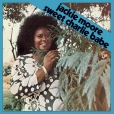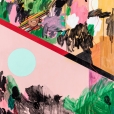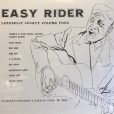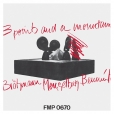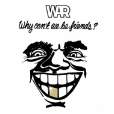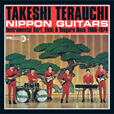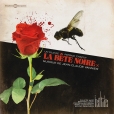Your basket is empty

‘Turbocharged highlife from 1980s Ghana… It opens in fine style with Nka Bom, horns sharply descending over a disco bassline, with a triumphant electric piano solo and a lengthy percussion interlude. Other highlights include the growling Gbenta, with a bluesy bassline and machine-gun drumming, and the trumpet voluntary and dubby choral singing on Moonlight Africa’ (Financial Times).
Produced by Eno, who discarded his own contributions as ‘clumsy and unnecessary compared to Edikanfo’s witty, light funkiness… What they’d given me was finished — there was nothing else I could add.’
Highly sought-after French jazz fusion — blending in West Coast funk, gentle blues, sketches of Andalusia — with John Hicks, Jerry Goodman from the Mahavishnu Orchestra, and Jean-Marie Fabiano from the Fabiano Orchestra.
The Beaters started out amidst the Soweto Soul explosion, inspired by the music of Stax and Motown. They supported the likes of Percy Sledge and Timmy Thomas. During a three-month tour of Zimbabwe (then Rhodesia), they were inspired by the strengthening independence struggle, and musicians such as Thomas Mapfumo, drawing on African musical styles and traditions. Back home in Johannesburg, they swapped their Nehru jackets for dashikis, and grew Afros. Their new Afro-centric rock and funk transformed the SA scene. Black Power in music, to get you on the good foot. ‘During apartheid times we made people laugh and dance when things weren’t looking good,’ remembers drummer Sipho Hotstix Mabuse.
Here, Love Love Love retains the influence of US soul, whilst Harari, Inhlupeko Iphelile, Push It On and Thiba Kamoo encapsulate the new direction; with a bump-jive workout, fired up by Kippie Moeketsi and Pat Matshikiza, to close.
‘Committed to tape on February 20, 1979… a real declaration of identity for Loren. He was introducing himself publicly as a guitar player, although his approach was still very much dictated by the influence of the painter, Mark Rothko, who Loren once described as using a minimal palette to create vital art… The feel to this session is bluesy, in as much as Loren’s wordless vocals have a surface similarity to a hellhound’s, and while he was not using a slide, most of the notes he plays are bent to the edges of their known range. Fahey always said blues was ‘about’ anger, though there’s not really any of that here. I am more reminded of this Rothko quote. ‘You’ve got sadness in you, I’ve got sadness in me ... and my works of art are places where the two sadnesses can meet, and therefore both of us need to feel less sad.’ The first side is solo. On the second Loren is joined for a bit by Kath on hums and recorder. The music brims with sorrow more than anything else. And while it’s clear Loren was embracing an abstract avant garde aesthetic vis-a-vis his playing, the urge to communicate seems to lie at its roots. Whatever you choose to call it, this is the beginning of something quite beautiful’ (Byron Coley).
‘One of the all-time great records of improvised music from Europe. Period. Blisteringly hot. Uncompromisingly inventive. Staggeringly beautiful. And insanely rare. Originally issued in the mid ‘70s on FMP, featuring the legendary Schlippenbach Trio — with Evan Parker and Paul Lovens — joined by Peter Kowald.
‘Just the first track, an incredible twenty-plus-minutes burner called Range, is worth the price of admission — as punk rock as free music gets, it shows Parker’s spectacular capacity for high-octane blowing. Kowald adds a chewy, molasses bottom to the group, offsetting Lovens’ flinty metal, stick and skin and Schlippenbach’s hyper-focused intensity.
‘A stone cold classic of creative music. Remastered from original tapes.’
LP from Cien Fuegos.
Mid-seventies Alvin Ranglin productions — an original LP, not a compilation — with the Revolutionaries deep in the groove, Sylvan Morris from Studio One at the controls, the Tamlins on backing vocals, and Deadly Headley and co chipping in tough brass.
Top Gregory, with classics like Jailer and Border.
These two sharpened their musical skills in the celebrated seja-jazz band from La Réunion, Le Club Rythmique. In 1967 Sylvin Marc put out a terrific funk 45, saturated in James Brown. Later, he would play bass for Nina Simone on her album Fodder On My Wings, whilst Del Rabenja would work with Manu Dibango.
In these 1972 recordings for Jef Gilson’s Palme label, they are joined by their Madagascan compatriots Ange Japhet, Gérard Rakotoarivony and Frank Raholison — comprising the same group of five which lights up Funny Funky Rib Crib by Byard Lancaster and Soul Of Africa by Hal Singer & Jef Gilson.
The first side showcases the valiha harp-playing of Del Rabenja: three excursions in tribute to the great Rakotozafy, hypnotic and full of spirituality. The second side presents four compositions by Marc — free, grooving and cosmic.
Previously unreleased recordings made in the Chelsea Hotel in 1960 on 1/4” tape, transferred here for the first time; the basis of Confessions Of An Irish Rebel, published posthumously five years later.
Stylishly reined-in, Southern-flavoured, churchy soul — same neck of the woods as Aretha — half recorded in Memphis by Jackie’s cousin Dave Crawford, including her smash hit Precious, Precious, with the Memphis Horns in full effect (and Dr. John, on Time); and half at Sigma, with Earl Young, Bobby Eli and co.
(Jackie Moore is well-known but under-rated. Try to track down the CD set The Complete Atlantic Recordings for a bunch of killer previously-unreleased sides.)
‘Starry-eyed Brazilian love songs, ambient vignettes, warm, home-cooked beats and gentle strokes of MPB genius.’ Even a shot of West African high life!
‘The beautifully laid back sunshine soul opener has all the charm of early-70s João Donato… On the R&B inspired Quero Dizer, the swirling, lo-fi, kalimba and guitar-fronted beat is turned into a feel-good hit by the ingenuity of Berle’s honey-soaked vocal melody… Powerfully intimate, O Nome Do Meu Amor is a guaranteed tearjerker, with his stunning voice soaring over gently plucked acoustic guitar and the textural flutter of soft movement, as if we hear him writing the song in the moment…’
“A super, subtle, beautiful record,” says Gilles Peterson.
The guitar pioneer with his groups the Bunnys and The Blue Jeans: hard surf to groovy 60s instrumentals, fuzz freak-outs to funk rock, from 1966-74.
Two fabled, previously unreleased soundtracks — hallucinogenic orchestral music for Patrick Chaput, and a waltzing, rhythmic onslaught for Robert Benayoun — complete with an extensive booklet of essays, interviews, secrets and rare images from both films.

